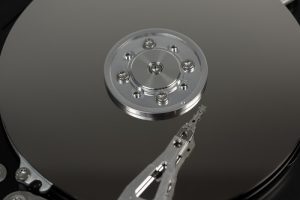We all need an external hard drive. It’s very convenient to have one because it allows us to carry all our data everywhere, we go.
The advantage of having an external hard drive is that you can easily carry large amounts of data anywhere and simply upload or download them from multiple computers/laptops at once. The traditional disc based hard drive is still in use, but there are many SSD’s that you could buy these days. They are more reliable and long-lasting.
(Via: https://www.technobezz.com/best/best-external-hard-drives-buy/)
Fortunately for us, external hard drives have become a lot sturdier. This is not to say that they’re not prone to fail because they are. Even if they’re long-lasting, they will eventually fail. It just takes a longer time for them to fail.
Then again, who are we to complain? External hard drives have come a long way.
There are ones designed to be used static as backup servers in home or office. Similarly, there are portable ones that are compact and easy to carry. Major brands like Seagate, Samsung, Western Digital, Toshiba, Kingston, Corsair and many others make hard drives these days.
(Via: https://www.technobezz.com/best/best-external-hard-drives-buy/)
Here are the 5 reliable external hard drives that we can all get now.
The first on the list is the Toshiba Canvio Basics 1 TB Portable External Hard Drive. If you’re looking for a sleek and compact external hard drive with a massive amount of space for storage, then this one’s for you.
Toshiba is one of the popular brands that continue to make hard disks, despite stiff competition with other more popular players in the market. The 1 TB Canvio Basics series provides a very compact product that you could comfortably carry around in your bag. Besides, it is very affordable and you could even buy two of them if needed or go with much larger sizes, including 2 TB and even a massive 4 TB variant to store large files. The storage size is purely based on user needs and if you have a requirement, you can buy one.
(Via: https://www.technobezz.com/best/best-external-hard-drives-buy/)
The second on the list is the Western Digital 4 TB Elements Portable External Hard Drive. If you’re dealing with super mega files and you need more than just 1TB of storage, then this colorful line of external drives is perfect for you.
The Western Digital brand is a household name among hard disk owners as it has been around for a long time now and people typically buy the brand without second thoughts. If you are a serious PC builder for media editing or gaming purposes, you will probably know WD already. If not, all you need to know is that it is one of the best companies around with great warranty claim, warranty period and will definitely provide great value for the money you pay. The WD 4 TB Elements Portable edition is an extremely nice looking gadget even though all it does is store data and help you transfer it easily.
(Via: https://www.technobezz.com/best/best-external-hard-drives-buy/)
The Seagate Backup Plus 2 TB Portable Hard Drive is third on the list. This is a slim hard drive that you can easily carry around.
The best hard drives are the ones that are compact and easy to carry around. While there are large storage racks and NAS setup in which you have to actually keep them in the same place, most common users would be interested in having a portable, large storage solution. The Seagate Backup Plus 2 TB portable hard drive ideally meets this requirement. While the 2 terabyte storage is being listed here, it is not the only one being offered by the company. The hard drive is available in different size variants ranging from a simple 1TB all the way up to a massively sized 5 TB variant.
(Via: https://www.technobezz.com/best/best-external-hard-drives-buy/)
Another Western external hard drive is fourth on the list. The Western Digital My Book Desktop External Hard Drive boasts of 8 TB of storage.
The purpose of this model is to make it easier to store large, when we say large we really mean it. The brand provides massive storage solutions on par with servers as the highest variant has 10 TB of storage solution for your exceptionally large files.
(Via: https://www.technobezz.com/best/best-external-hard-drives-buy/)
The fourth on the list is the Silicon Power 1 TB Black Rugged Armor External Drive with shock proofing. This another portable external hard drive that’s built to last for, supposedly, a long time.
The Silicon Power is an extremely rugged product and the manufacturers tried to convey the information by using lots of different words. One of the keywords that you should definitely consider is shockproof which helps the product stand apart from every other product out there. While the hard disk is not SSD, it is still more reliable because of the external pouch used to cover the hard disk. It is supposed to keep the disc drive quite safe and safeguard it against accidental drops but make sure you don’t drop it too many times. The longevity of the product is much higher because of the external cover used.
(Via: https://www.technobezz.com/best/best-external-hard-drives-buy/)
These 5 reliable external hard drives are definitely worth the money. So, go right ahead and choose the one that suits your needs most. Just keep in mind that you also need a reliable hard drive recovery service in case your choice of storage hardware fails you.
The Hard Drive Recovery Group specializes in both https://www.harddriverecovery.org/seagate-data-recovery.html and https://www.harddriverecovery.org/western-digital-data-recovery.html.
The following blog post 5 Reliable External Hard Drives Available Now is courtesy of HDRG
source https://www.harddriverecovery.org/blog/5-reliable-external-hard-drives-available-now/








